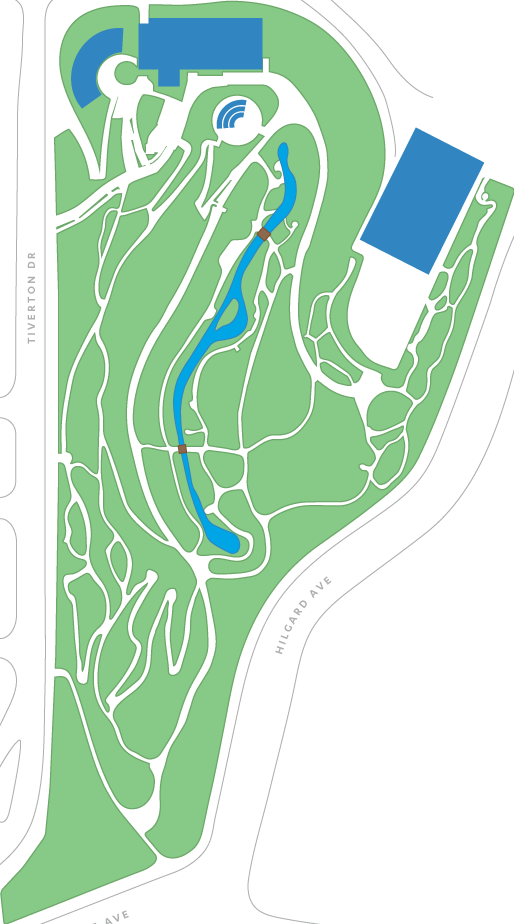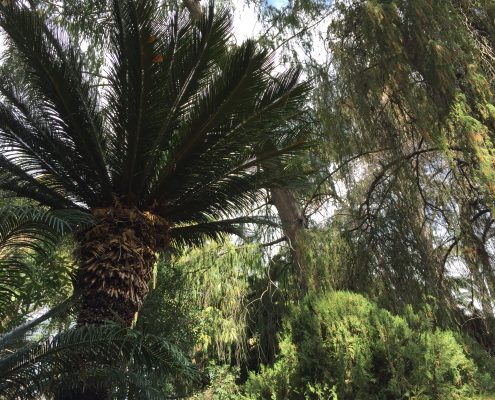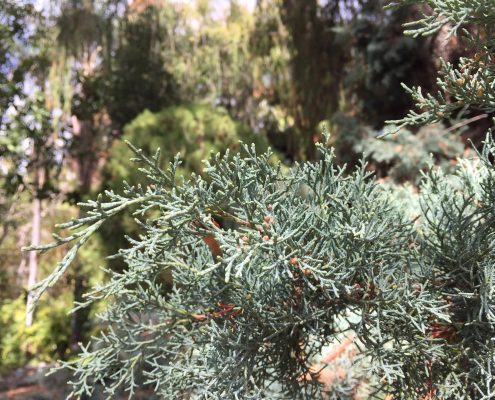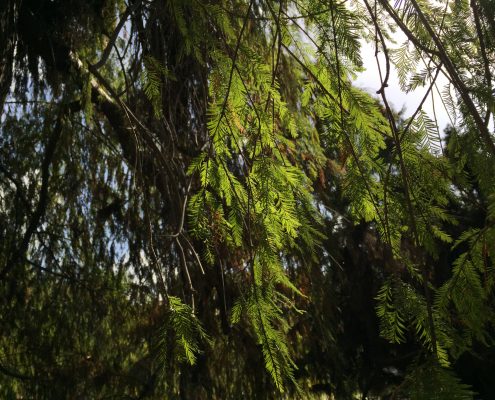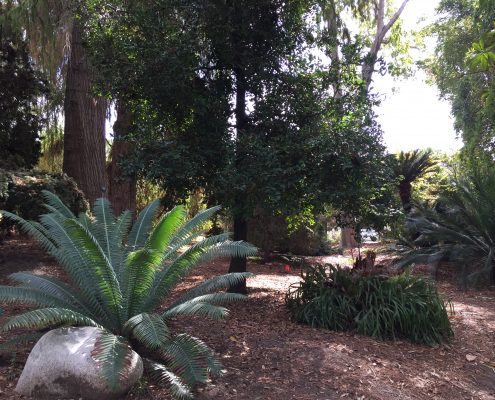Ancient Forest
200 million years ago, forests on Earth looked very different from today. We know this because plant fossils provide a glimpse of how plants evolved. Long ago, there were no flowering trees such as oaks or maples. Instead, ancestors of the plants you see around you filled the forests.
Ancient plants reproduced in a few different ways. Tree ferns reproduce through spores. Others, like the Montezuma cypress and cycads, reproduce using cones. The Garden also contains ancient seed plants like the fan-leafed ginkgo tree. After this time in Earth’s history came flowering plants, like the magnolia tree ahead on the left.
BOSQUE ANTIGUA
Al clasificar fósiles de plantas por edad, podemos echar un vistazo a la evolución de plantas terrestres lo que nos permite ver también que, los bosques de entonces y los actuales, eran muy diferentes. No había árboles con flores, como los encinos. En cambio, los bosques estaban llenos de los antepasados de las plantas que ahora ves a tu alrededor. Había helechos, que se reproducen mediante esporas, y plantas ancestrales capaces de producir semillas incluyendo a los ginkgos con hojas en forma de abanico, las cícadas y las coníferas que desarrollan conos como el ciprés de Moctezuma (también llamado árbol del tule, Taxodium mucronatum). Más adelante, a tu izquierda, hay un árbol de magnolia, un ejemplo de un árbol ancestral, el siguiente paso en la evolución de plantas terrestres.
